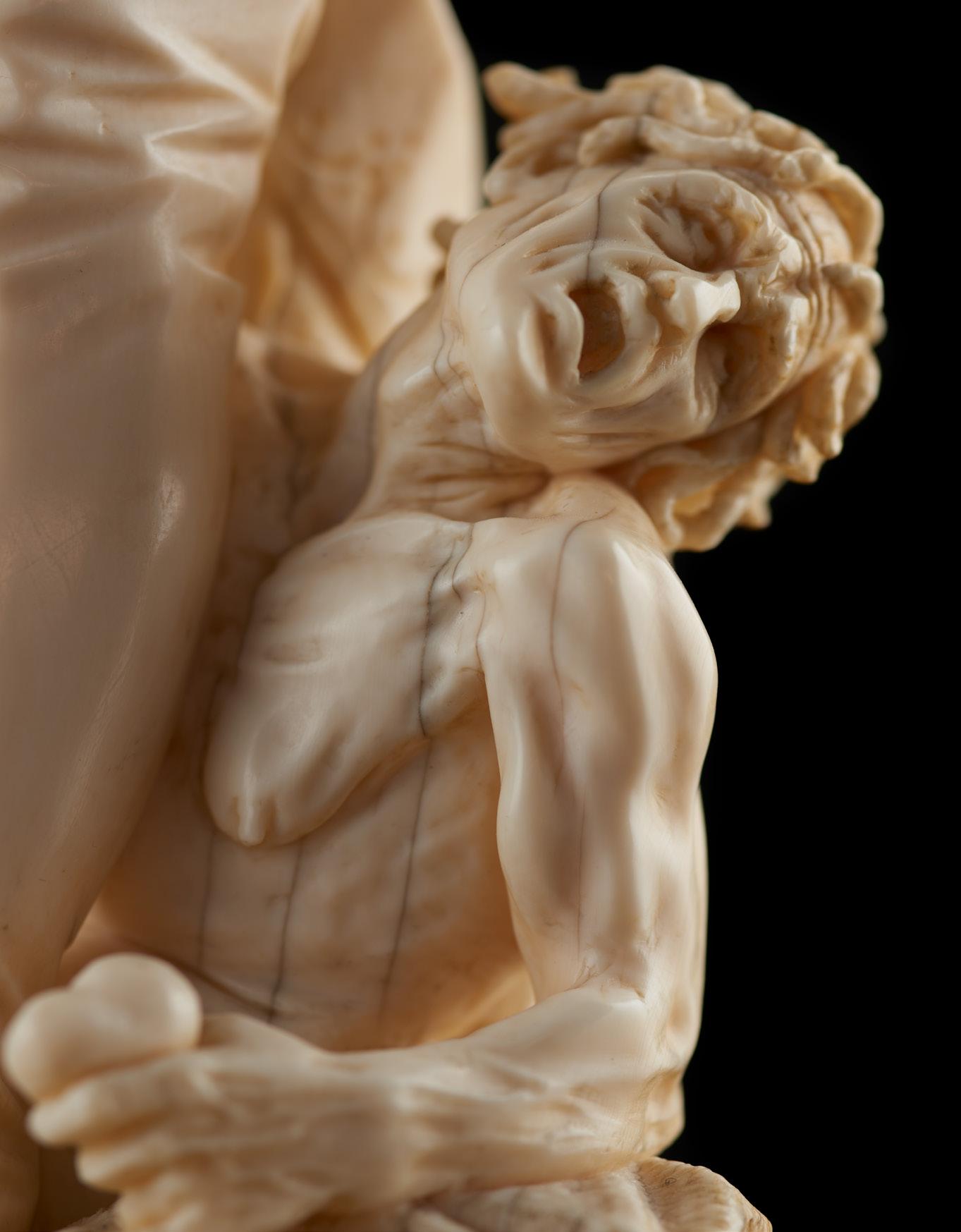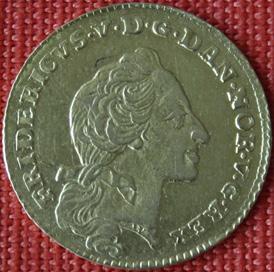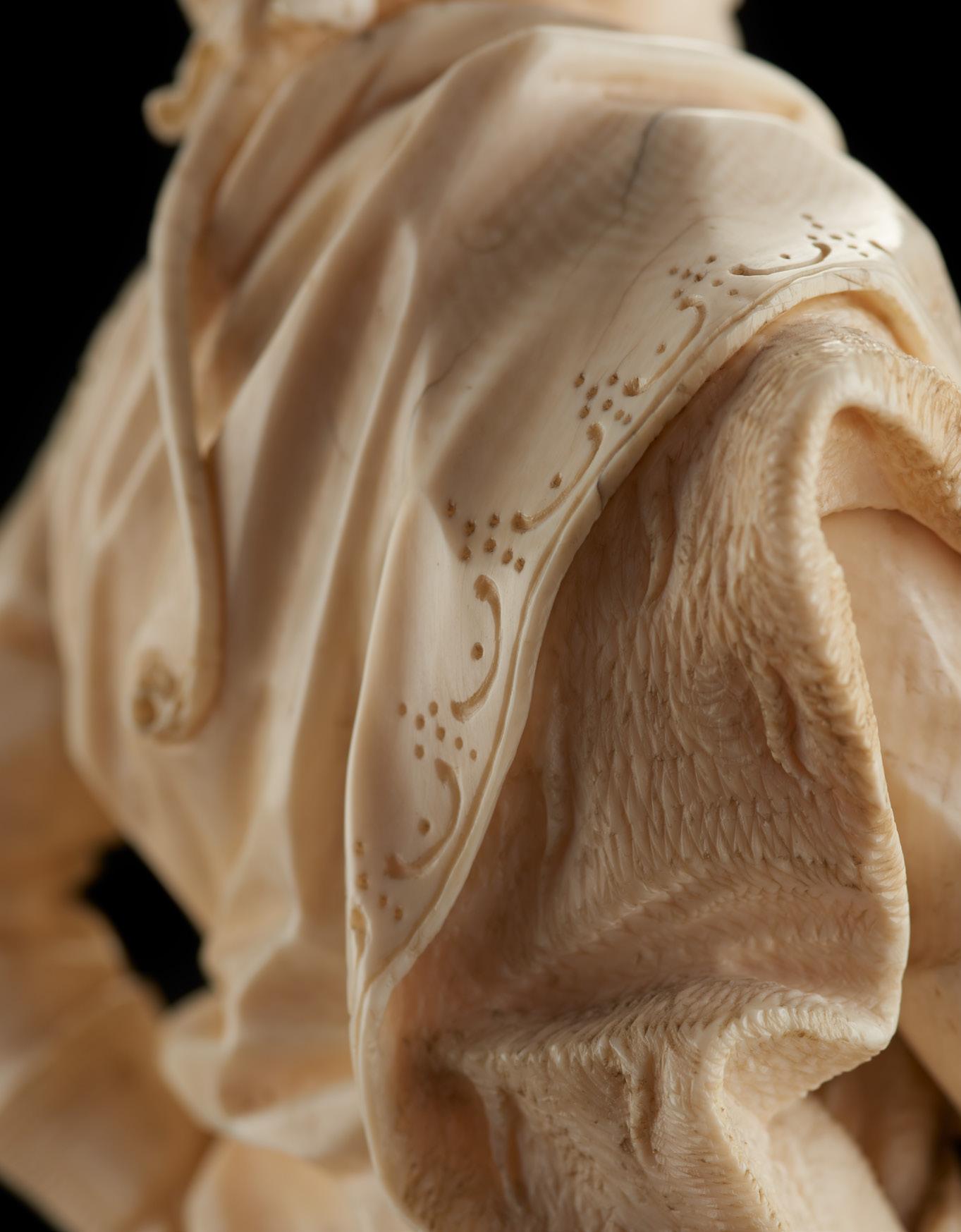
6 minute read
27 Relief of the Rape of Europa, by Dominikus Stainhardt
from JB Test 01/22
This allegory of a ruler depicts Frederick V (b. 1723 in Copenhagen) who bore the title ‘King of Denmark and Norway, Duke of Schleswig and Holstein and Count of Oldenburg and Delmenhorst’ from 1746 until his death in 1766. Its similarity to contemporary portraits leaves no doubt as to its attribution. A further clue can be found in the monogram ligature on the sword’s handguard. Frederick V reputedly wore the Order of the Dannebrog on his chest.
However, on this statuette, it is not the Order of the Dannebrog that is shown but the Order of the White Eagle that was worn during the same period by the Electors of Saxony.
Advertisement
It is very probable that Lücke wanted to offer his services to the Court of Copenhagen through the presentation of this figure. Having inadvertently carved the order – the all-so-important ruler’s symbol – incorrectly, this work was presumably rejected and did not remain in Copenhagen.
The monarch is stepping over a figure crouching on the ground, his gaze directed into the distance. He is dressed in full regalia. Between the folds of his ermine-lined cloak, the star-shaped order is visible. He is carrying a sword at his side that bears the monogram ‘F5’, for Frederick V, on the pommel. The Danish kings always used the first letter of their name with the respective Roman numeral as their monogram. It seems as if the monarch does not even notice the uglylooking, unclothed old woman lying at his feet. This figure, the antithesis of the good-looking, strong ruler is, in fact, an allegory of envy. The old woman has torn her own heart out of her chest and is holding it up in her hand towards the legitimate ruler with her last breath.
The group of figures is signed ‘Lŭdewig von Lücke.Fe:’ on the base. Johann Christoph Ludwig Lücke, a sculptor and carver of small figures, was born around 1703, probably in Dresden. He worked as an apprentice under Balthasar Permoser or the ivory carver Carl August Lücke the Elder, who was probably his father or uncle. Afterwards, as a journeyman, Lücke went to France, Holland and England. In 1728 he was called to work as a modeller at the Meissen porcelain manufactory and, from 1729 onwards, worked independently as an ivory carver in Dresden. At this time at the latest he was in contact with Balthasar Permoser. In the following years Lücke repeatedly applied for the position of court sculptor in Dresden without success. Nevertheless, his successfully sold his works, including Die Zeit hebt die gesinkene Kunst (Time raises foundered art; 1736)1 and an ivory crucifix (1737). In a description of the ‘Grünes Gewölbe’ (Green Vault) from 1739 it was ‘praised to the highest degree’.2 Today, it is one of the major exhibits in the Dresden ivory collection.
28
1 Signed I.C.L. Lücke, dated 1736, SKD, Grünes Gewölbe, Dresden, inv. no. II 337, Kappel 2017, p. 335f 2 Kappel, op. cit., p. 358 3 Theuerkauff, op. cit., p. 28 4 Ibid.
5 The heir presumptive Frederick (1753-1805) as a babe-in-arms, ivory, 17.8 x 5.9 x 4.3, 1754?, signed L. von Lückefecit, Rosenborg Castle, inv. no. 13-136, cf. Hein, op. cit., no 245, p. 371f, with ill. 6 Theuerkauff, op. cit., p. 28, with ill.; one terracotta relief is in the Museum Schloss Gottorf, inv. no. 1971/165


fig. 1. This bust of Frederick V of Denmark shows physiognomic similarities to the figure in our ivory group. Here you can also see the correctly depicted Order of the Dannebrog on the cloak.
Terracotta sculpture by J.F.J. Saly, Kastrup(?), 1754, height 101 cm, inv. no. B 416, The David Collection Evidence exists that Lücke subsequently worked in various different places, including Schwerin, St. Petersburg and Hamburg. He worked once again as a porcelain modeller in Vienna and Fürstenberg. The search for commissions and a permanent position led to a certain restlessness.
Thanks to the assistance of Count Waldemar Schmettau,3 Lücke left Hamburg for Copenhagen in 1752. For an annual salary of 600 thalers and the title ‘Ober Kunst Cämmerier’ (court master of the arts) he was to produce porcelain that was to be ‘at least as good as that of Meissen’.4 However, the samples of his work were not sufficiently appreciated and once again nothing came of a permanent appointment.
Lücke continued to work in ivory at the same time, as evidenced by the small ivory sculpture ‘Der Erbprinz als Wickelkind’ (The hereditary prince as a babe-in-arms) that is now to be found in the collection in Rosenborg Castle.5 He created a relief portrait of Frederick V in clay during this period that was probably produced in series and of which three copies are known today.6
It is very likely that Lücke wanted to recommend himself as an ivory carver at the court in Copenhagen with this allegory of the Danish king as a ruler. After his works in porcelain had met with so little approval he then demonstrated his far greater talent as an ivory carver with this figure. Its artful execution, its delicately reproduced detailing and its exceptional iconography are distinguishing features of this incomparable masterpiece. The ruler, who was above envy and malice, was charitable towards the artist Lücke as well and later granted him an annual pension of 400 thalers.
28

Impressum (Input)
Julius Böhler Kunsthandlung Unterer Seeweg 4 82319 Starnberg www.boehler-art.com
Blumka Gallery 222 Central Park South, #3 New York, NY 10019 www.blumkagallery.com Gainsborough Studios, 222 Central Park South.
Herausgeber 2022 Lorem Ipsum Unterer Seeweg 4 82319 Starnberg
Projektleitung Flo Eitle-Böhler, Tony Blumka Julia Scheid, Eva Bitzinger
Redaktion und Lektorat Kristina von Mustermann
Gestaltung D-signbureau
Druckerei Vogl GmbH & Co KG
ISBN: 978-3-00-071129-9
Bildnachweise (Input)
1 Risius, P., Burstedde, A., Flake, R. (2018): „Fachkräfteengpässe in Unternehmen. Kleine und mittlere Unternehmen finden immer schwerer Fachkräfte und Auszubildende“. KOFA-Studie 2/2018. URL: www.kofa.de
2 Bauer, T. (2019): „Berufliche Bildung im Kontext globaler Fachkräftemobilität – Perspektiven, Tendenzen, Akteure“, Fachvortrag bei der Fachtagung „Bildung: Mobilität – global denken“ des Goethe-Instituts e.V. am 23.11.2019 in Berlin.
3 Die Bundesregierung (2018): „Fachkräftestrategie der Bundesregierung“. URL: www.bmas.de
4 Die Bundesregierung (2018): „Entwurf eines Fachkräfteeinwanderungsgesetzes“. URL: www.bmi.bund.de
5 Deutsches Kompetenzzentrum für internationale Fachkräfte in den Gesundheits- und Pflegeberufen. URL: www.dkf-kda.de
6 Deutsche Fachkräfteagentur für Gesundheits- und Pflegeberufe. URL: www.defa-agentur.de
7 Bauer, T. (2019): „Berufliche Bildung im Kontext globaler Fachkräftemobilität – Perspektiven, Tendenzen, Akteure“, Fachvortrag bei der Fachtagung „Bildung: Mobilität – global denken“ des Goethe-Instituts e.V. am 23.11.2019 in Berlin.
8 Goethe-Institut e.V.: „Das Ankommen in Deutschland beginnt schon vor der Einreise“. URL: www.goethe.de/vorintegration
9 Goethe-Institut e.V. (2017): „Vom Infopoint bis zum interkulturellen Training. Wie das Goethe-Institut Zuwandernde aus Südostasien auf ihr Leben in Deutschland vorbereitet. Evaluation des Projektes „Vorintegration in der Region Südostasien“. Analyse und Handlungsempfehlungen“. URL: www.goethe.de/vorintegration 10 Jaschke, P., Keita, S. (2019): „Say it like Goethe: Language learning facilities abroad and the self-selection of immigrants.“ In: IAB-Discussion Paper 14/2019, IAB, Nürnberg. URL: www.iab.de
11 Huber, M., Uebelmesser, S. (2019): „Presence of language-learning opportunities and migration“. In: CESifo Working Paper 7569, CESifo, München. URL: www.cesifo.org
12 Goethe-Institut e.V., Analyse zur Fachkräftemobilität, geplante Veröffentlichung Mai 2020
13 Die Bundesregierung (2018): „Fachkräftestrategie der Bundesregierung“. URL: www.bmas.de
14 Die Bundesregierung (2018): „Entwurf eines Fachkräfteeinwanderungsgesetzes“. URL: www.bmi.bund.de
15 Deutsches Kompetenzzentrum für internationale Fachkräfte in den Gesundheits- und Pflegeberufen. URL: www.dkf-kda.de
16 Deutsche Fachkräfteagentur für Gesundheits- und Pflegeberufe. URL: www.defa-agentur.de
17 Bauer, T. (2019): „Berufliche Bildung im Kontext globaler Fachkräftemobilität – Perspektiven, Tendenzen, Akteure“, Fachvortrag bei der Fachtagung „Bildung: Mobilität – global denken“ des Goethe-Instituts e.V. am 23.11.2019 in Berlin.
18 Goethe-Institut e.V. (2017): „Vom Infopoint bis zum interkulturellen Training. Wie das Goethe-Institut Zuwandernde aus Südostasien auf ihr Leben in Deutschland vorbereitet. Evaluation des Projektes „Vorintegration in der Region Südostasien“. Analyse und Handlungsempfehlungen“. URL: www.goethe.de/vorintegration










